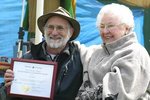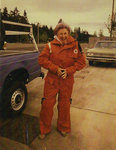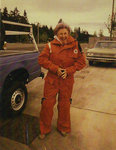(This story published at 6 a.m. April 25. Eleanor Stopps died at 11:08 a.m. April 25 in Tacoma. She was 92.)
Eleanor Stopps is a quiet, humble woman – yet she draws a standing ovation when …
This item is available in full to subscribers.
We have recently launched a new and improved website. To continue reading, you will need to either log into your subscriber account, or purchase a new subscription.
If you had an active account on our previous website, then you have an account here. Simply reset your password to regain access to your account.
If you did not have an account on our previous website, but are a current print subscriber, click here to set up your website account.
Otherwise, click here to view your options for subscribing.
* Having trouble? Call our circulation department at 360-385-2900, or email our support.
Please log in to continue |
|



(This story published at 6 a.m. April 25. Eleanor Stopps died at 11:08 a.m. April 25 in Tacoma. She was 92.)
Eleanor Stopps is a quiet, humble woman – yet she draws a standing ovation when introduced at Port Townsend Marine Science Center gatherings.
“I think she’s a hero for us because she’s an ordinary person who latched onto an extraordinary goal and made it happen,” said Anne Murphy, PTMSC executive director.
Although Stopps' grassroots campaign to protect Protection Island took place in the 1970s and early 1980s, the Jefferson County woman remains an inspirational role model for environmentalists who still praise her accomplishments.
Stopps, 92, has fallen ill and is under hospice care.
Until recently, she had been a Jefferson County resident (Mats Mats Bay, north of Port Ludlow) since 1974. Starting in the 1960s, she worked with Zella Schultz, an artist and ornithologist, to study and band glaucous-winged gulls on Protection Island.
The island located off Diamond Point in Clallam County and Cape George in Jefferson County was recognized since the 1930s as an important seabird and wildlife habitat. But the island – with no fresh water supply – became privately owned and was platted for development.
Schultz died in 1974, and Stopps vowed to continue her friend's work to protect Protection Island.
"What else could I do?" Stopps told Port Townsend Marine Science Center co-founder Libby Palmer in 2000. "This is the only thing that could be done – for the birds. It had to be done – and there was no on else around to do it. So I did. Most people think about our problems today as being beyond them. People told me it was hopeless. But it can be done. I just never would take no for an answer. Whenever I see it, I'm reminded again of what a special place this is."
With no special political base or powerful financial backers, Stopps testified before the Washington State Legislature and the U.S. Congress. She led a nine-year grassroots effort that culminated in 1982 when Congress allocated $4 million for the purchase of Protection Island as a national wildlife refuge. It was the only refuge designated during President Ronald Reagan's eight-year administration. He signed the deal on Oct. 15, 1982.
Stopps has been slowed in recent years by complications from polio, which she suffered as a child and a young woman. Earlier this year, Stopps was diagnosed with terminal cancer, and was given six months to live. Within a week of the diagnosis in late March, she sold her home and moved into assisted living in Gig Harbor to be closer to her grandchildren. Within a week of moving she was in St. Joseph Medical Center in Tacoma.
As of Tuesday morning, April 24, family had been called to her bedside.
Stopps had requested cremation, and no funeral service.
When the time comes, memorial contributions may be made in her name to Nature Conservancy and Habitat for Humanity. Friends, with Eleanor's knowledge, are preparing a memorial sculpture.
Anne Murphy said Stopps has always been eager to talk to children and encourage the next group of activists. The PTMSC still honors Stopps’ fight to preserve Protection Island. Seasonal wildlife cruises tour the island and give the public access to why protecting it matters.
“Her life’s work was one that I think would impress all people,” Murphy said. “She thought big and accomplished great things because she did not impose limits on herself.”
Island history
The book, City of Dreams (1986) contains this history of Protection Island, written by Bob Biffle and edited by Peter Simpson.
"In some age long past, it might have been a part of the mainland; mastodon bones and teeth have been revealed in the strata of the 200-foot cliffs on the west side of the island, slowly exposed after time and tide have worn away the shelter of ancient soil." Wave action erodes the base of the cliffs at an average of 6 inches per year, according to the Olympic Peninsula Audubon Society.
Native Americans undoubtedly stopped on the island while on their coastal canoe journeys, but the near constant wind and lack of potable water made for temporary visits.
English Capt. George Vancouver's first landing in this area came along what he named Discovery Bay. On the island, he wrote in spring of 1792, "We gathered some gooseberries and roses." The expedition also brought the name Protection Island for the manta ray shaped mass that protected the bay from northwest winds and, if fortified with cannon, would protect from enemy approach.
Settlement fever hit this region in the middle of the 19th century and white settlers, tempted by the farming prospects of an island with little heavy timber, moved there in 1857.
Parceled out by the government, the island's ownership was consolidated in the 1860s, and sold to John Power, Sr. who moved there in 1875. He rowed his family and farm goods the 10 miles into Port Townsend. Power sold the island in 1887.
The Portland Gun Club cultivated pheasants, which thrived with no four-legged predators. During America's prohibition years, smugglers running liquor from Canada would breeze to the island to transfer cargo, and take pheasants.
Wildlife biologist Arthur Einarsen from 1937 to 1943 conducted studies of the island's ring-necked pheasant population and in the 1940s urged the government to acquire the island as a wildlife sanctuary.
The government did take over the island in 1941 as part of the U.S. Army Coast Artillery Harbor Defense of Puget Sound. Since the late 1890s, the government had considered the island for defensive fortifications (like those built at Fort Worden, Fort Flagler, etc.), but none were constructed.
The island's surface changed in August 1946 when a careless camper's fire burned it all.
Developers bought the property in 1953 for $20,000, aiming for a hunters' and sportsmen's paradise. The Protection Island Co. purchased it in 1968 for $435,000 and subdivided four of the original five units, according to published reports.
"Eventually the island was parceled out into 800 lots among 500 owners, major development was continually thwarted by lack of water," Biffle wrote.
The 1960s
Stopps joined the Seattle Audubon Society where she met Zella Schultz, an artist, ornithologist and licensed bird bander for the U.S. Fish and Wildlife Service who had been going to Protection Island at least once a year in the 1960s.
Stopps and Schultz became friends, and went to Protection Island once a year to band gulls. Schultz had begun an effort to convince the state or federal government to purchase and protect the island and its species.
The month Schultz died in 1974, at age 53, the Nature Conservancy bought the island's western end (one of the island's eight property tracts) from the developer and re-sold it to the state. This 48-acre sanctuary, the first non-game sanctuary in Washington, was named the Zella M. Schultz Seabird Sanctuary.
Also in 1974, Stopps and her husband moved to Jefferson County simply because of the rural beauty – and he wanted out of Seattle. It was not because of Protection Island, she noted. "Fate seemed to step in because I was in the right place, in the right county to have a say," she said in 2005.
After Schultz died, a lot of people wanted to do something in her memory. Stopps had been working with Schultz on the artist's book, and after her death did the final work necessary on the book about gulls. On the Wings of the Wild Wind published in 1974, and sold out.
An art show of Schultz's work was also staged, but the larger goal was to protect the island.
Stopps founded a chapter of the Audubon Society in Port Townsend and started an "Adopt a Seabird" program, raising $50,000 – enough money to buy 23 lots on Protection Island. At the same time, she got the local Audubon group and Nature Conservancy to start pressuring county, state and national groups, agencies and politicians to take action.
Stopps realized that federal intervention was required, and she got Washington's entire delegation – Republicans and Democrats – to show support.
The effort gained traction under President Jimmy Carter's administration, but Stopps was warned the plan could unravel when Republican Ronald Reagan took office in 1980. Stopps would not give up. Although local and regional fundraising efforts had led to the purchase of some lots, Stopps knew federal money was key.
Washington Congressman Don Bonker introduced legislation in July 1980 to establish the Protection Island National Wildlife Refuge, and senators Henry Jackson and Slade Gorton reintroduced it in 1981. Stopps spoke at a series of Senate hearings in 1982, and President Reagan signed it on Oct. 15, 1982. Reagan approved full funding on Sept. 29, 1983.
The government bought the remaining lots, and a few actual residents with habitable structures were allowed to stay (if they wished); a few still have this residency right.
However, no new development is allowed. An old airstrip is being reclaimed by nature, as are some of the old roads.
The island is off-limits to picnickers, boaters and campers, and boaters are supposed to stay 200 yards offshore. The bird breeding colonies are on the bluffs and shorelines and can be safely viewed by boaters using binoculars.
The U.S. Fish and Wildlife Service has caretakers on the island, and scientists are also allowed visits.
Natural history
Today, Protection Island is a critical link in the preservation of the whole Salish Sea region.
Protection Island comprises 364 acres of grass and low brush habitat with a small timbered area. It also has high sandy bluffs for seabird nesting and low sand spits on two ends for shorebirds, seals and a variety of other wildlife.
The island receives about nine inches of precipitation a year, which means the soil stays dry and ideal for bird nesting habitat.
According to the U.S. Fish and Wildlife Service, at least 70 percent of the seabirds in Puget Sound nest on Protection Island including one of the world's largest rhinoceros auklet colonies. Thousands of rhinoceros auklets (a small seabird) return to their burrows to feed their young as the sun sets each evening – the island devoid of four-legged predators.
The island also provides important nesting habitat for glaucous-winged gulls, pelagic cormorants, tufted puffins (one of only two such nesting colonies in Puget Sound), pigeon guillemots, double-crested cormorants, and black oystercatchers and is home to a bald eagle nest.
Harbor seals use the island for pupping and as a hauling-out area.
The refuge, along with San Juan Islands National Wildlife Refugee, are part of the Washington Maritime National Wildlife Complex.
Additionally, the Washington State Department of Natural Resources proposed the Protection Island Aquatic Reserve.
In 2008, the nonprofit People for Puget Sound urged establishment of the reserve (200 yards around the island) to protect the seabirds which breed and rear their young on Protection Island. The island supports herring, shrimp and Dungeness crab populations.
Aquatic reserve management does not restrict access to fishing, crabbing or boating, nor does it set harvest restrictions.
Environmental awards
Eleanor Stopps bashfully has accepted many environmental awards. The U.S. Fish and Wildlife service presented a Citizen Appreciation Award in 1988. She was named a Jefferson County Citizen of the Century for 1889-1989, shared with Mary McQuillen.
In 1992, Stopps received the Nature Conservancy's Oak Life, its highest award. Rep. Norm Dicks presented her a Hood Canal Coordinating Council award in 2003.
Since 2005, Eleanor Stopps’ example and legacy of citizen leadership in efforts to protect the environment have been recognized through the Eleanor Stopps Environmental Leadership Award, now administered through the PT Marine Science Center.
Stopps Award recipients are: Katharine Baril, former natural resource educator and planner, WSU Extension, 2005; Anne Murphy, executive director, Port Townsend Marine Science Center, 2006; Tom Jay and Sara Mall Johani, artists and environmentalists, 2007; Al Latham, Jefferson County Conservation District ranger, 2008; Peter Bahls, Northwest Watershed Institute, 2009; Sarah Spaeth, executive director, Jefferson Land Trust, 2010; and Dick and Marie Goin of Port Angeles, for more than 70 years of tracking Olympic Peninsula salmon and steelhead stocks.
The Port Townsend Marine Science Center takes nominations for the annual Eleanor Stopps Environmental Leadership Award. Nominations recognize citizens on the North Olympic Peninsula who have provided leadership in protection and stewardship for the environment.